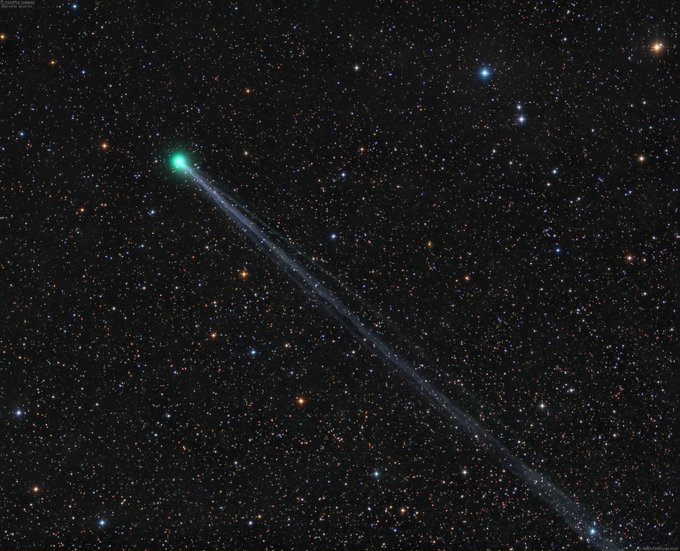The Hubble Telescope took these pictures on April 20th and 23rd. As you can see, the once glowing ball of icy rock is now a mess of broken pieces. (See the article in Astronomy).
 |
| NASA, ESA, D. Jewitt (UCLA), and Q. Ye (University of Maryland) |
I would have liked to get a close up image of the comet with my EdgeHD, but the skies just wouldn't cooperate.
But, although Comet Atlas is no more, Comet Swan looks like it will take over the limelight and is ready to become the “best naked eye comet of 2020.”
Officially designated as C/2020 F8 (SWAN), it has already brightened sufficiently to be seen by the naked eye - and it's sporting a long thin tail. Damian Peach, noted planetary photographer from the U.K., has taken this photo on April 28th. He stated on Comet SWAN's Twitter account (#Comet) "the tail on this is now at least 8 deg long! The best comet I've seen in some years! 200mm F2 lens with FLI CCD camera."

Bad news for us up here in the northern hemisphere -- Comet SWAN is a southern hemisphere comet. But in late May we should be able to spot it low in the NW just after sunset if the estimates of it's brightness pan out. I'll be posting more info later this month.
With the clouds putting the kibosh on any imaging from Mikey's place the past week, I had some time to process data I captured on the Rosette nebula in narrow-band that I took back in early March with my GT102. The processing gave me fits and it took three attempts (redoing the entire process over from the start) to get it right. Well, as right as I can make it at the present. I'm trying to determine what in the process is not working as well as it could to reduce the noise in the final image. Once I do that I'll probably go for a forth attempt :)
 |
| The Rosette Nebula in Narrow-band March 8 and 9, 2020 GT102 and ASI1600mm Camera -- Just under 6 hrs integration time |
'Till next time ...
Mikey



No comments:
Post a Comment